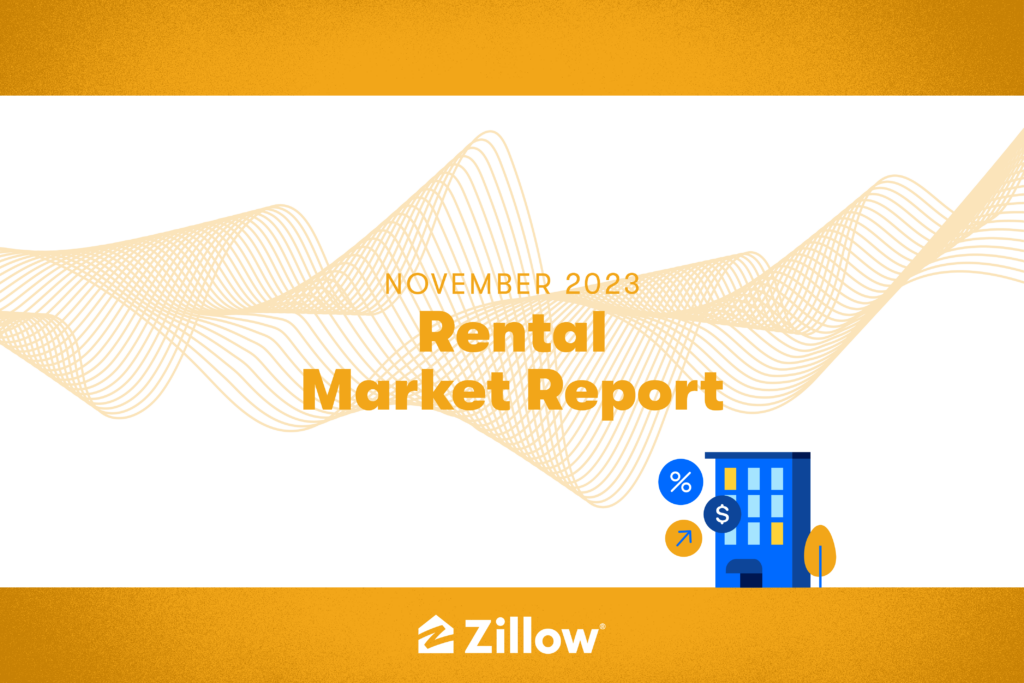A Blend of Stability and Gradual Changes in the U.S. Rental Market (November 2023 Rental Market Report)


The rental market this November displayed a pattern of steady trends punctuated by minor fluctuations. In November, the typical rent across the United States stood at $1,982 according to the Zillow Observed Rent Index (ZORI), reflecting a slight decrease of 0.2% from the previous month. This movement, or lack thereof, aligns closely with the pre-pandemic norms for this time of year, which traditionally saw little to no change month-over-month.
However, when we zoom out to view the broader picture since the beginning of the pandemic, rents have surged by a striking 29.4%. Year-over-year, rents have increased 3.3%, underscoring the continued upward trend in the rental market.
Beginning this month, Zillow is now producing two additional versions of ZORI to reflect single-family homes and, separately, multi-family homes. Nationally, the annual pace of rent growth remains stronger for single-family homes.
The typical rent for single-family homes in November was $2,148, showing a marginal month-over-month dip of 0.1%. Since the pandemic’s onset, single-family rents have risen significantly, by 35.7%. This trend is reflected in the year-over-year data, with a notable increase of 4.8%. Zillow’s housing predictions for 2024 noted this will likely continue into the new year as more households form and face affordability pressure keeping them out of the for sale market, dubbing the single family rental the “new starter home”.
The data for multi-family homes told a slightly different story. Typical rents for those properties averaged $1,845 in November, down 0.3% from the previous month. This cooldown is likely due at least in part to the huge number of new multifamily buildings that have recently hit the market. With an influx of new buildings coming online, renters are also seeing more than 3 in 10 rental listings on Zillow offering concessions to attract more attention.
Despite the monthly decrease in typical rents and an uptick in incentives, multi-family rents have climbed by 23.3% since the pandemic began, with a year-over-year rise of 2.5%.
The aspect of rent affordability remains a vital concern. In October 2023, the most recent data available, the median household would have to allocate 30% of their income towards a new rental. That is a slight increase from last year and right on the edge of what is generally considered affordable housing. In more expensive markets, renters face a steeper burden, with a higher portion of their income needed for rent. For instance, in Miami, the median renter needs to allocate 43.6% of their income towards rent. In the New York metro area, this figure stands at 40.7%, while in Los Angeles, renters must spend 38% of their income on rent.
The rental vacancy rate, a key indicator of the rental market’s health and competitiveness, stood at 6.4% in September (the most recent data available, from the Housing Vacancies and Homeownership database through the Census), slightly lower than the pre-pandemic average (7.1%) for this time of year. With vacancy rates still low compared to a pre-pandemic fall and affordability remaining a major hurdle in the for sale market, rent demand and thus rent prices will continue to see upward pressure in the coming months.